- About Us
- Bearings
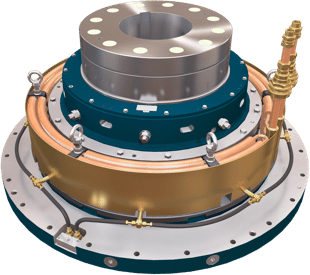 Vertical Bearings
Vertical Bearings
- AV Series
AV
LV SeriesLV
MV SeriesMV
V SeriesV
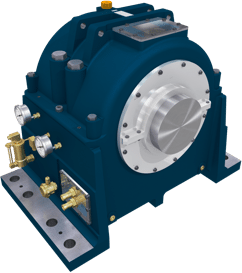 Horizontal Bearings
Horizontal Bearings
- HD Series
HD
IH SeriesIH
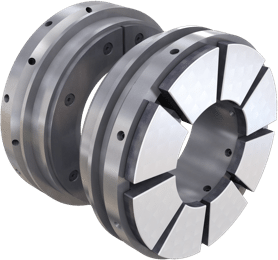 Tilting Pad Bearings
Tilting Pad Bearings
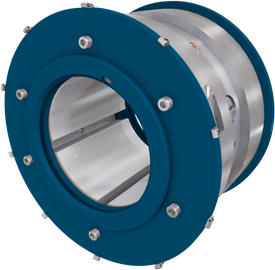 Journal Bearings
Journal Bearings
- Journal Pad Units
Journal
 Thrust Bearings
Thrust Bearings
- SE Series
SE
Omega EqualisedOmega
OmegaOmega
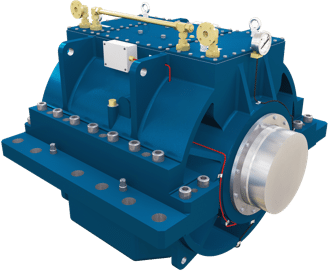 Marine Bearings
Marine Bearings
- Marine Gearbox Internals
Marine
Marine Propulsion Motor
and Generator BearingsEnter your email to download the full paper
"*" indicates required fields
Outline
Home > Thrust Block Performance Improvements Using Polymer Lined Tilting PadsThrust Block Performance Improvements Using Polymer Lined Tilting Pads
J. Butler MEng AMIMechE, Michell Bearings
Abstract
At the beginning of the twentieth century, the introduction of A.G.M. Michell’s tilting pad bearing solution revolutionised naval thrust block design and performance. Even with today’s modern designs, the fundamental concept remains unchanged, a testament to the relative simplicity and reliability of his elegant solution. The tilting pad bearing solved the inherent limitations, problems and power losses associated with the preceding multi-collar fixed geometry designs.
One aspect of thrust block design that continues universally today is the use of tin-based whitemetal (Babbitt) as the lining material of choice for bearing tilting pads. While whitemetal has proven successful since its conception in 1839, its physical characteristics introduce limitations on naval thrust block design in terms of size and performance. In recent years, interest in, and research into, polymer lined tilting pad bearings has increased as opportunities for improved performance and efficiency continue to be sought. Polymers such as PTFE (polytetrafluoroethylene) and PEEK (Polyetheretherketone) have been shown to provide much improved specific load capability and reduced coefficients of friction compared to whitemetal.
This paper reviews the potential benefits of using polymer lined tilting pads in naval thrust block designs, providing reference to previous experimental work. A typical generic operating envelope and shaft diameter are then used to develop thrust block designs as a case study covering use of different pad lining materials.
By utilising the advantages of polymer lined tilting pads a significant improvement in bearing performance, propulsion system efficiency and signature reduction is shown resulting in reduced thrust block size, weight,
power loss and breakout torque; improved minimum continuous speed capability and the lack of requirement for high pressure oil injection jacking systems.Introduction
Marine vessels having propulsion delivered by conventional propeller shafts require a thrust bearing to absorb the propulsive thrust generated. Up until the turn of the twentieth century, shaftline main thrust bearings (thrust
blocks) were predominantly of the fixed geometry design with a series of thrust collars and counter-surfaces. The multi-collar bearings were heavy and generally troublesome in operation as the plain, fixed geometry faces were designed with little knowledge of the principles of hydrodynamic lubrication. A.G.M. Michell’s development of the tilting pad thrust bearing provided a significant improvement upon the status quo resulting in a rapid switch away from the previous multi-collar designs (Simmons & Advani, 1987). The efficiency of the tilting-pad bearing is illustrated by the comparison shown in Figure 1, which demonstrates the large savings in space, weight and auxiliary equipment.Whilst the change of the elements carrying thrust load was rapidly accepted due to the considerable savings and reliability improvements, the materials of construction of these thrust blocks were not subject to the same revolution. Then, as now, the stationary parts of the bearing were faced with tin-based whitemetal (Babbitt) or occasionally made from varied bronzes. The rotating shafts and collars were steel or iron. The lubricants were mineral oils of various viscosity ratings. These substances remain the materials of choice for the vast majority of
ACCESS FULL PAPER
hydrodynamic bearings produced today.Recommended articles
Like for Like Performance Comparison of PEEK and PTFE Thrust Bearings for use in Vertical Pump and Motor Applications
PTFE Bearing Technology – An Alternative to Whitemetal
PTFE Bearing Technology for Thrust and Journal Applications
Michell Bearings
Waldridge Way,
Simonside East Industrial Park,
South Shields,
NE34 9PZ.Tel: +44 (0) 191 273 0291
Email: sales@michellbearings.com
Email: hrteam@britishengines.com
Email: recruitment@britishengines.com© Michell Bearings.
Registered Office Address: 11 Glasshouse Street, St Peter's, Newcastle upon Tyne. NE6 1BS. Company registered in England and Wales no. 9390648

 PTFE Bearings
PTFE Bearings